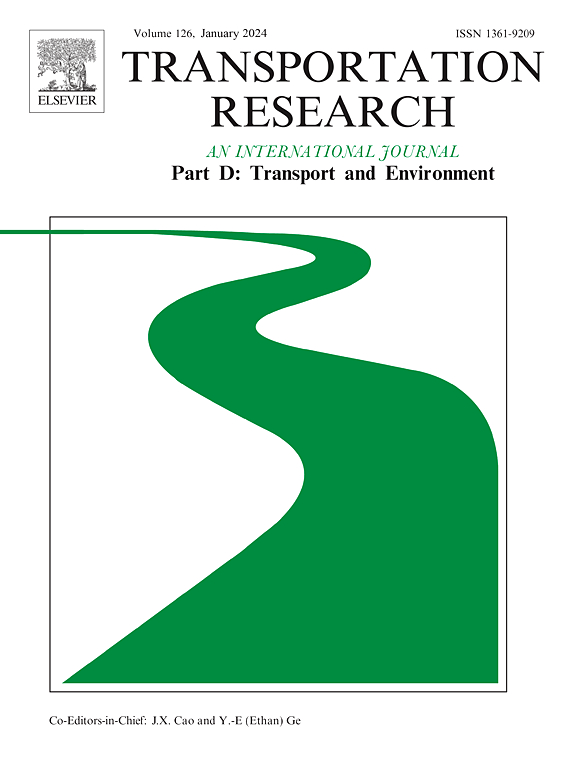公用事业还是股权?分析德克萨斯州奥斯汀市公共电动汽车充电器配置
IF 7.7
1区 工程技术
Q1 ENVIRONMENTAL STUDIES
Transportation Research Part D-transport and Environment
Pub Date : 2025-09-17
DOI:10.1016/j.trd.2025.104994
引用次数: 0
摘要
在美国,弱势群体使用公共电动汽车(EV)充电站的机会往往有限,这引发了人们对充电公平的担忧。虽然像Justice40这样的联邦项目承认这些问题,但传统的分析往往依赖于预定义的阈值和未充分利用的可访问性措施,从而忽略了关键维度。为了填补这一空白,本研究比较了两种公平分析方法:一种测量可达性不平等,另一种测量可达性贫困。我们在德克萨斯州奥斯汀市进行了一个案例研究,在此期间我们计算了公共电动汽车充电站的可达性指标。为了测量可及性不平等,我们使用了Lorenz曲线、基尼系数、Theil指数、Segplot、Palma Ratio和集中度曲线等工具。为了衡量可及性贫困,我们使用了需求差距分析,如过境沙漠分析和FGT分数。我们的分析揭示了传统方法的局限性,并展示了替代方法如何通过在连续尺度上测量获取差距来补充传统方法。本文章由计算机程序翻译,如有差异,请以英文原文为准。
Utility or equity? Analyzing public electric vehicle charger allocations in Austin, Texas
Disadvantaged groups in the U.S. often face limited access to public Electric Vehicle (EV) charging stations, raising concerns about charging equity. While federal programs like Justice40 acknowledge these issues, conventional analyses often overlook key dimensions by relying on predefined thresholds and underusing accessibility measures. To fill this gap, this study compares two equity analysis approaches: one measuring accessibility inequality and another measuring accessibility poverty. We conducted a case study in Austin, Texas, during which we calculated accessibility measures for public EV charging stations. For measuring accessibility inequality, we employed tools such as the Lorenz Curve, Gini Coefficient, Theil Index, Segplot, Palma Ratio, and concentration curve. For measuring accessibility poverty, we used needs-gap analyses, such as transit desert analysis and the FGT score. Our analysis reveals limitations in traditional methods and demonstrates how alternative approaches complement traditional methods by measuring access gaps on a continuous scale.
求助全文
通过发布文献求助,成功后即可免费获取论文全文。
去求助
来源期刊
CiteScore
14.40
自引率
9.20%
发文量
314
审稿时长
39 days
期刊介绍:
Transportation Research Part D: Transport and Environment focuses on original research exploring the environmental impacts of transportation, policy responses to these impacts, and their implications for transportation system design, planning, and management. The journal comprehensively covers the interaction between transportation and the environment, ranging from local effects on specific geographical areas to global implications such as natural resource depletion and atmospheric pollution.
We welcome research papers across all transportation modes, including maritime, air, and land transportation, assessing their environmental impacts broadly. Papers addressing both mobile aspects and transportation infrastructure are considered. The journal prioritizes empirical findings and policy responses of regulatory, planning, technical, or fiscal nature. Articles are policy-driven, accessible, and applicable to readers from diverse disciplines, emphasizing relevance and practicality. We encourage interdisciplinary submissions and welcome contributions from economically developing and advanced countries alike, reflecting our international orientation.

 求助内容:
求助内容: 应助结果提醒方式:
应助结果提醒方式:


